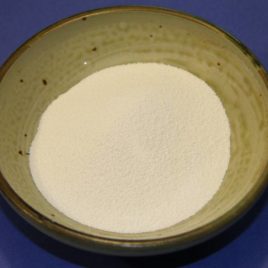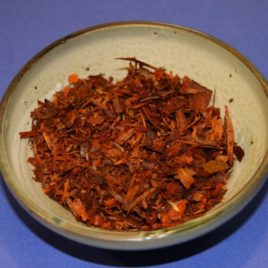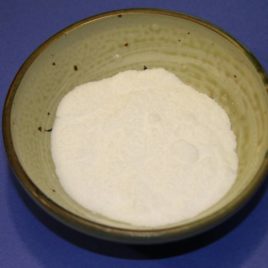Back to Mordants and Additives
Myrobalan, Ground
$3.30 – $25.50
Ground nuts of a tropical tree, Terminalia chebula.
Use on protein or cellulose fibres. Considered both a mordant and a dye, because of the high tannin content. Yields a light butter-yellow to beige or mushroom. Substantive, no mordant needed. Use at 15-20% WOF as a mordant on cellulose fibres. As a dye, use at 20-30% WOF for medium shades.
TO USE:soak 24 hrs in water to dissolve. Add more water if necessary and enter fibre. Bring to a high simmer for 1 hour. Let fibre cool overnight.
Light and washfastness: good.
SKU: N/A
Categories: Mordants and Additives, Natural Dyes
Tags: beige, butter yellow, mushroom, natural dyes
Related products

Urea (Ammonium nitrate) – 250g
Price per 250g (8.82 oz) container.
CANADIAN SHIPPING ONLY. Limit of 1 per order. We stock Urea in larger packs, including 500g and 1kg sizes available for pickup at the shop only. PLEASE CONTACT US for availability and prices: [email protected]
Due to the potential use of urea as an ingredient in explosives, we wish to handle the distribution of it carefully. Absolutely NO international orders!
We also cannot, by law, supply Urea to those wishing to use it as a nitrogen fertilizer for home garden or agricultural application.
Used mainly with synthetic dyes as an ASSIST, urea helps to open up fibres and allow for better dye penetration, and also keeps the fibre wetter for longer during direct application of dyes. This is a soluble form of urea that dissolves easily in hot water.
TO USE: Follow any of the dyebook directions for cold pad batch dyeing.
Dispose of spent dyebath in the usual way, most likely down the drain.
CAUTION: Should be used with good ventilation. Wear a mask when handling powders. Wear gloves.

Soda ash
Used with fibre reactive dyes as a colour FIXATIVE. Soda ash raises the pH and allows the dye to bond with the fibre. Generally used only with cellulose (plant) fibres such as cotton or flax. Also known as washing soda or sal soda, though this is a more pure form that the washing soda sold in supermarkets.
Also sometimes used in natural dyeing to create more alkaline conditions, and thus altering the colour with certain plants. Extensively used for indigo vat dyeing.
TO USE: Follow dye manufacturer’s directions for amounts and timing.
Dispose of spent dyebath in the usual way, most likely down the drain.
CAUTION: Wear a mask when handling powders. Wear gloves, can be a skin irritant.

Logwood, Chips
Dried and cured chips from a tropical tree, Haematoxylum campechianum.
Use on protein or cellulose fibres. Pre-mordanting essential. Produces dramatic pink, blue, maroon and purple to black shades. Use at 20-50% WOF for medium shades.
TO USE: place chips in a stocking and soak overnight in cold water. Bring to a simmer for 1 hour, cool and remove stocking. Enter premordanted fibre and simmer for 1 hour. Bath may be used for successive dips, and by the 3rd or 4th dip the colours being yielded change to golds, greens or browns.
Light and washfastness: average. Keep dyed fibres away from bright light.
NEW: Logwood Extract: this has already been soaked out then reduced down to a powder. It's expensive but very strong and super convenient. Simply weigh out the extract at around 10% weight of fibre for medium shades, or adjust for darker or lighter. Dissolve in a measuring cup with hot (but not boiling) water, add to your dyepot with water, mix well, add your fibre and simmer for an hour.

Thiourea Dioxide
Sometimes called Thiox. Used in the INDIGO VAT dye process, thiox removes oxygen from the vat solution, allowing the indigo to work its magic. Thiox is also a colour remover, and is used for that purpose in discharge dyeing, to create white patterns on a coloured background.
TO USE: Follow the specific indigo vat recipe, for amounts and timing.
Dispose of spent dyebath in the usual way, most likely down the drain.
Thiourea dioxide has a shelf life but it's longer than some things you read might indicate. If the powder has a distinctive yellow look, it has probably oxidized to some degree and may no longer be effective. Store in a cool, dry place out of the light i.e. in a cupboard in the house, not out in the garage.
CAUTION: Should be done OUTDOORS ONLY or with excellent ventilation. Avoid breathing fumes. Wear a mask when handling powders. Wear gloves.


